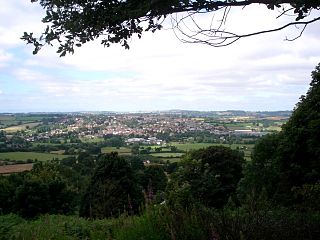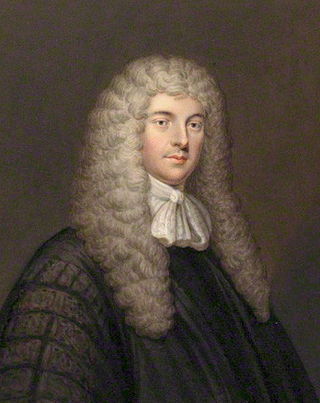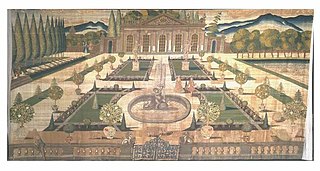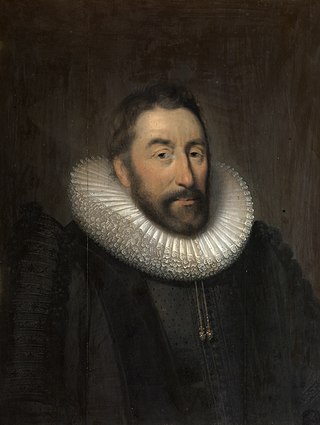
Bromyard is a town in the parish of Bromyard and Winslow, in Herefordshire, England, in the valley of the River Frome. It is near the county border with Worcestershire on the A44 between Leominster and Worcester. Bromyard has a number of traditional half-timbered buildings, including some of the pubs; the parish church is Norman. For centuries, there was a livestock market in the town.
Thomas Foley or Tom Foley may refer to:

Hereford was, until 2010, a constituency of the House of Commons of the Parliament of the United Kingdom. Since 1918, it had elected one Member of Parliament (MP) by the first-past-the-post voting system.
Sir Henry Lingen, Lord of Sutton, Lingen and Stoke Edith, was a Royalist military commander in Herefordshire during the English Civil War, and later a member of parliament. He was the son of Edward Lingen and Blanche Bodenham. He fathered 2 sons, Henry and William and 7 daughters, Elizabeth, Joan, Blanch, Mary (Dobbyns), Cecilia, Frances (Unett), and Alice (Herring). Both sons died without issue but the daughters left considerable posterity.

Paul Foley, also known as Speaker Foley, was the second son of Thomas Foley of Witley Court, the prominent Midlands ironmaster.

Stoke Edith is a village in the English county of Herefordshire, situated on the A438 road between Hereford and Ledbury. The population in 1801 of Stoke Edith parish was 332.

Tarrington is a small village in Herefordshire, England located halfway between Ledbury and Hereford on the A438 road.

Croft Castle is a country house in the village of Croft, Herefordshire, England. Owned by the Croft family since 1085, the castle and estate passed out of their hands in the 18th century, before being repurchased by the family in 1923. In 1957 it was bequeathed to the National Trust. The castle is a Grade I listed building, and the estate is separately listed as Grade II*. The adjacent Church of St Michael is listed Grade I.

Sir Thomas Coningsby was an English soldier and Member of Parliament, notable for his diary of military action in France in 1591, and his feuds over local representation in Herefordshire.

Thomas Foley, of Stoke Edith Court, Herefordshire, was a British landowner and Tory politician who sat in the English and British House of Commons between 1691 and 1737. He held the sinecure office of auditor of the imprests.

Thomas Foley, of Stoke Edith, Herefordshire was a British landowner and Member of Parliament.
This is a list of Sheriffs and, since 1998, High Sheriffs of Herefordshire

The Stoke Edith Wall Hanging is an embroidered wall hanging made in 1710–20, depicting elegant people walking in an early 18th-century garden. This is the larger of two such works which originally hung in Stoke Edith in Herefordshire.

Sir Walter Pye of The Mynde, Herefordshire was an English barrister, courtier, administrator and politician who sat in the House of Commons from 1621 and 1629.

Lady Emily Foley was a major landowner and benefactress in nineteenth-century England.

Dormington is a village and civil parish in Herefordshire, in the West Midlands of England. Dormington village is at the north of its parish, 5 miles (8 km) east from the centre of the city and county town of Hereford, and 8 miles (13 km) west-northwest from the town of Ledbury. The parish is a significant traditional centre for hop growing.

Pudleston, is a small village and civil parish, in the county of Herefordshire, England, and is 13 miles (20 km) north from the city and county town of Hereford. The closest large town is Leominster 4 miles (6 km) to the west. At Pudleston is the c.1200 Church of St Peter, and the 1846 Tudor-Gothic Pudleston Court.

Paul Henry Foley was an English first-class cricketer, cricket administrator and barrister.

Hatfield and Newhampton is a civil parish in the county of Herefordshire, England, and is 11 miles (18 km) north from the city and county town of Hereford. The closest large town is Leominster 4 miles (6 km) to the west. The parish includes the small village of Hatfield, the former extra-parochial liberty of New Hampton, the site of former abbey lands of Fencote, the preserved Fencote railway station, and the Grade II* listed 11th-century Church of St Leonard.
Roger Vaughan JP DL was an English politician and courtier who was a Member of Parliament for Hereford.


















